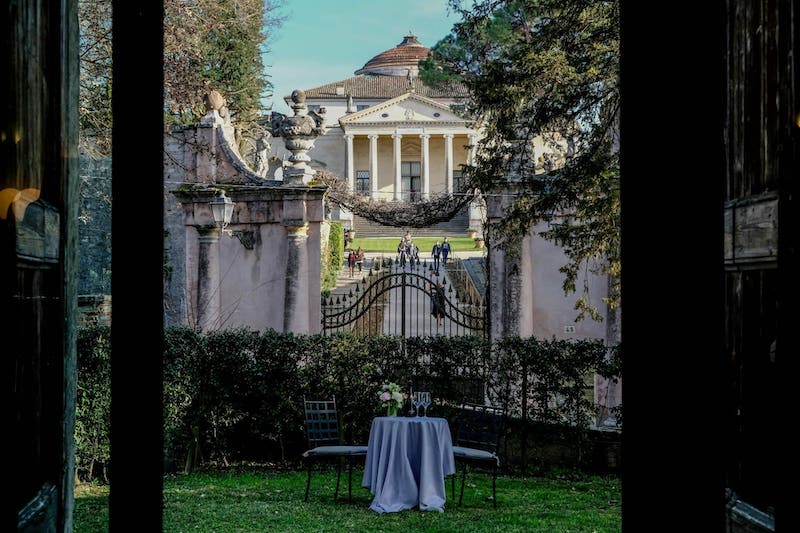Villa Almerico Capra, known as “La Rotonda,” is one of Palladio’s most extraordinary Palladian villas and an icon of antiquity-inspired perfection. This masterpiece by Andrea Palladio stands on a hill, just a few kilometers from the city of Vicenza.
To fully appreciate Palladio’s grandeur and inspiration, we suggest you start from this very villa to explore the UNESCO heritage of Palladian villas in the Veneto region.
Here are 8 fascinating facts to know before visiting Villa Rotonda.
Discover 8 facts about Villa Rotonda, the most charming of the Palladian villas
1# The official name of the villa is Villa Almerico Capra, however it is more commonly referred to as “La Rotonda” or “Villa Rotonda”. Perched atop a small hill, this magnificent estate majestically dominates the city of Vicenza from the south.
2# La Rotonda is widely regarded as the quintessential example of Palladian villas, an architectural masterpiece commissioned by Paolo Almerico in 1566. The villa is named after the Capra brothers, who took over the construction after the death of both the commissioner and Palladio and eventually became the owners of the building. The villa, as it stands today, was fully completed in 1597.
3# The architectural design of the villa features a central Greek cross plan and a dome, reminiscent of religious buildings. Palladio’s inspiration for the design was deeply rooted in the beauty of antiquity. The villa stands out for its four identical facades, each adorned with six Ionic columns, and every side featuring an entrance reached by a grand flight of steps. Despite these elements, the building’s overall shape is not circular, but rather square and elongated to form the shape of a cross.
4# The design of the villa was heavily influenced by a renowned structure in Rome. If the villa’s appearance appears familiar to you, it may be due to its resemblance to the Pantheon in Rome. Palladio drew inspiration from this ancient Roman temple, which was later converted into a Catholic church. This inspiration is particularly evident in the villa’s portico, which was designed to mirror that of the Pantheon.
5# The beauty of Villa Rotonda extends beyond its exterior and into the interior, where visitors can marvel at the exquisite decorations and stunning perspectives. What many do not realize is that the villa’s unique architectural design, consisting of arches and cross vaults, allows it to lack a conventional foundation. Instead, the upper floors are supported by a structural grid of planks, which adds to the villa’s impressive construction.
6# The design of Villa Rotonda, situated atop a small hill on the outskirts of Vicenza, is truly remarkable. Palladio’s vision was to create a building that, while appearing symmetrical, was in fact not completely so. Rather than constructing a perfectly symmetrical building, he sought to ensure that it blended seamlessly with the natural landscape around it. This means that if the same structure were built on a flat surface, it would appear entirely asymmetrical.
7# Undoubtedly, the most striking feature of Villa Capra is its incredible dome interior. Interestingly, Palladio did not plan for this element during the initial design phase, as he integrated a taller semicircular dome into the building. The dome with an oculus that is now a defining characteristic of the villa’s interior was actually added by the subsequent architect, Scamozzi, who completed the building.
8# Villa Capra has served as a significant source of inspiration for numerous constructions across the globe. It is considered one of the most influential buildings built during the Renaissance era. Over time, Andrea Palladio’s style became widely renowned and emulated, giving rise to the term Palladian architecture. This style has been implemented in numerous constructions worldwide, including some of the most prominent examples in the United Kingdom, such as Chiswick House in London and Mereworth Castle in Kent. Even the United States’ most famous building, the White House, incorporates elements of Palladian villa architecture.
| Keep reading: Venetian Villas from Venice to Vicenza |
Villa Rotonda in a nutshell: experience of timeless beauty, capable of inspiring and conveying deep and lasting emotions.

